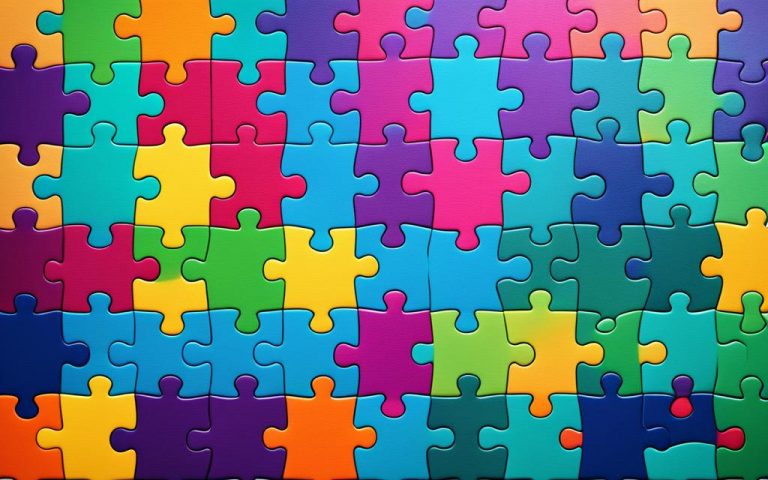PTSD Disorder: Symptoms & Help
PTSD Disorder: Welcome to our comprehensive guide on Post-Traumatic Stress Disorder (PTSD). If you or someone you know is affected by this debilitating condition, it is crucial to understand the symptoms and available support to manage PTSD effectively. In this article, we will explore what PTSD entails, common symptoms, different treatment options, and strategies for managing PTSD in everyday life.
Key Takeaways:
- PTSD, or post-traumatic stress disorder, is a psychological condition characterized by intense anxiety and distress following a traumatic event.
- Common symptoms of PTSD include recurring flashbacks, nightmares, hypervigilance, and avoidance of triggers.
- Seeking help and support is crucial for individuals with PTSD. Resources such as support groups, helplines, and online communities can provide invaluable assistance.
- Effective treatments for PTSD include therapy (such as cognitive-behavioral therapy and eye movement desensitization and reprocessing) and medication options.
- Specific therapies like exposure therapy and cognitive processing therapy can aid individuals in overcoming PTSD.
What is PTSD?
PTSD, or Post-Traumatic Stress Disorder, is a psychological condition that can develop after a person has experienced or witnessed a traumatic event. It is a psychiatric disorder that can occur in people of all ages and backgrounds.
The prevalence of PTSD is significant, with millions of people worldwide affected by this disorder. In India alone, it is estimated that about 3% of the population experiences PTSD at some point in their lives.
PTSD is characterized by a range of symptoms that can have a profound impact on an individual’s daily life. These symptoms can include:
- Recurring flashbacks and intrusive memories of the traumatic event
- Nightmares and sleep disturbances
- Hypervigilance and an exaggerated startle response
- Emotional numbness and avoidance of reminders of the trauma
- Difficulty concentrating and problems with memory
“PTSD is not a sign of weakness. It is a natural reaction to an unnatural event.”
Experiencing PTSD can significantly impact an individual’s overall well-being, relationships, and ability to function in their everyday life. Therefore, understanding and addressing PTSD is crucial for effective treatment and recovery.
It is important to note that while PTSD is commonly associated with military combat veterans, it can occur in anyone who has gone through a traumatic experience, such as natural disasters, accidents, or incidents of violence.
Now that we have an overview of PTSD, let’s explore the common symptoms associated with this disorder in the next section.
Common Symptoms of PTSD
Living with post-traumatic stress disorder (PTSD) can be challenging, as the disorder often manifests through a range of symptoms that can have a significant impact on daily life. It’s important to recognize and understand these symptoms to better support individuals with PTSD.
Recurring Flashbacks
One common symptom of PTSD is experiencing recurring flashbacks. These flashbacks are vivid and intrusive memories of the traumatic event, making individuals feel as though they are reliving the experience. Flashbacks can be triggered by various stimuli, such as sights, sounds, or smells that remind them of the traumatic event.
Nightmares
Nightmares are another common symptom of PTSD. These disturbing dreams often revolve around the traumatic event and can cause intense fear, anxiety, and distress. Nightmares may lead to difficulties sleeping and can have a significant impact on an individual’s overall well-being.
Hypervigilance
Hypervigilance is a heightened state of awareness and constant scanning of the environment for potential threats or danger. Individuals with PTSD may always feel on edge, constantly alert and ready to respond in order to protect themselves. This state of hypervigilance can lead to feelings of exhaustion and anxiety.
Living with the symptoms of PTSD can be incredibly challenging, affecting both the individual with the disorder and those around them. It’s crucial to provide understanding, support, and resources to help manage these symptoms and improve overall quality of life.
Understanding and recognizing these common symptoms is just the first step in helping individuals with PTSD. By providing a supportive environment and encouraging them to seek professional help, individuals can learn effective coping mechanisms and find the treatment they need to overcome the challenges associated with PTSD.
Next, we will delve deeper into the different ways individuals can seek help and support for PTSD. Stay tuned!
Seeking Help for PTSD
If you or someone you know is struggling with post-traumatic stress disorder (PTSD), it’s crucial to seek help and support. PTSD can have a significant impact on an individual’s mental health and overall well-being, but with the right resources, recovery is possible.
There are various avenues for obtaining the necessary support and assistance needed to navigate the challenges of PTSD. These resources can provide guidance, empathy, and a sense of community that is essential for healing and growth. Some options to consider include:
- Support Groups: Joining a support group can connect you with individuals who have had similar experiences and can understand the struggles of living with PTSD. These groups offer a safe space to share thoughts, emotions, and coping strategies.
- Helplines: Helplines provide confidential and immediate assistance from trained professionals who can offer guidance, information, and emotional support. These helplines are available around the clock, ensuring help is accessible whenever needed.
- Online Communities: Engaging with online communities dedicated to PTSD can offer a platform for connecting with others who share similar experiences. These communities allow for anonymous participation, making it easier for individuals to seek and provide support.
Remember, seeking help is not a sign of weakness, but rather a courageous step towards healing. There is no shame in reaching out to others who can provide the support and understanding necessary to navigate the challenges of PTSD.
“Seeking help is an act of strength, and it is never too late to start the journey towards healing and recovery.” – Maya Johnson, PTSD Survivor
Whether it’s through support groups, helplines, or online communities, reaching out for assistance can provide valuable insights, coping mechanisms, and empathy in dealing with PTSD. You don’t have to face this journey alone.
To further understand the importance of seeking help and support for PTSD, refer to the table below:
| Resource | Description |
|---|---|
| Support Groups | Connect with individuals who have shared experiences and gain support, empathy, and coping strategies. |
| Helplines | Confidential and immediate assistance to provide guidance, information, and emotional support. |
| Online Communities | Engage in anonymous platforms to connect with others, share experiences, and seek support. |
Remember, support is available, and you never have to face PTSD alone. By seeking help, you are taking a significant step towards healing and reclaiming your life.
Effective Treatments for PTSD
When it comes to managing post-traumatic stress disorder (PTSD), finding the right treatment approach is crucial. Fortunately, there are various effective treatments available that can help individuals alleviate their symptoms and regain control over their lives.
Therapy for PTSD
One of the most common and beneficial treatment options for PTSD is therapy. Therapeutic approaches, such as cognitive-behavioral therapy (CBT) and eye movement desensitization and reprocessing (EMDR), can significantly reduce the impact of traumatic experiences and help individuals develop healthy coping mechanisms.
CBT: This type of therapy focuses on identifying and challenging negative thought patterns and beliefs associated with the traumatic event. CBT helps individuals learn effective coping strategies and develop healthier behavioral responses to stressors.
EMDR: EMDR integrates elements of exposure therapy and bilateral stimulation techniques to help individuals process traumatic memories and reduce their emotional intensity. It can effectively alleviate distressing symptoms associated with PTSD.
Therapy sessions are typically conducted with trained mental health professionals who specialize in trauma-related disorders. The duration and frequency of therapy may vary depending on individual needs.
Medication for PTSD
In some cases, medication may be prescribed as part of the treatment plan for PTSD. Antidepressants, such as selective serotonin reuptake inhibitors (SSRIs), can help individuals manage symptoms of depression and anxiety commonly associated with PTSD. These medications work by balancing certain chemicals in the brain to improve mood and reduce anxiety.
It’s important to note that medication should always be prescribed and monitored by a qualified healthcare professional. They will determine the appropriate medication, dosage, and duration based on individual needs and considerations.
While therapy and medication are effective treatment options, it’s essential to remember that each person’s experience with PTSD is unique. Therefore, it’s crucial to consult with a healthcare professional to develop a personalized treatment plan that suits your specific needs.
Next, we will dive deeper into various therapies that individuals can undergo to overcome PTSD. These therapies focus on specific techniques to help individuals heal from their past traumas and move towards a brighter future.
Therapies for Overcoming PTSD
Overcoming PTSD can be a challenging journey, but with the right therapeutic techniques, individuals can regain control of their lives and find healing. In this section, we will explore some evidence-based therapies that have shown promising results in helping individuals overcome PTSD.
Exposure Therapy
One powerful therapy for overcoming PTSD is exposure therapy. This therapy involves gradually exposing the individual to the traumatic event or triggers associated with the trauma in a controlled and safe environment. By facing these feared situations, individuals can learn to reduce their anxiety and fear responses over time.
During exposure therapy, a qualified therapist will guide you through various techniques, such as imaginal exposure or in vivo exposure. Imaginal exposure involves revisiting the traumatic memory through guided imagery, while in vivo exposure focuses on directly confronting real-life situations that trigger PTSD symptoms.
If you choose to pursue exposure therapy, remember that it is essential to work with a trained therapist who has experience in treating PTSD. They can provide you with the necessary tools and support to navigate this therapeutic process effectively.
Cognitive Processing Therapy
Cognitive Processing Therapy (CPT) is another effective therapy for overcoming PTSD. This therapy aims to help individuals identify and challenge negative thoughts and beliefs associated with the trauma. By examining and reframing these distorted thoughts, individuals can develop healthier and more adaptive ways of thinking.
During CPT sessions, the therapist will guide you through structured exercises and discussions to help you process your traumatic experiences. By gaining a better understanding of the impact of these experiences on your thoughts and feelings, you can gradually shift towards a more positive and balanced mindset.
CPT typically involves a specific protocol consisting of 12 sessions, although the duration may vary depending on individual needs. To maximize the benefits of this therapy, it is crucial to actively participate and engage in the process, both during sessions and through practice outside of therapy.
Other Evidence-Based Therapies
In addition to exposure therapy and cognitive processing therapy, there are other evidence-based therapies that have been shown to be effective in treating PTSD. These include:
- Cognitive-Behavioral Therapy (CBT): A type of therapy that focuses on identifying and modifying negative thoughts and behaviors related to the trauma.
- Eye Movement Desensitization and Reprocessing (EMDR): A therapy that combines elements of exposure therapy with bilateral eye movements or other forms of bilateral stimulation to process traumatic memories.
- Acceptance and Commitment Therapy (ACT): A therapy that encourages individuals to accept their thoughts and feelings while committing to actions aligned with their personal values.
It is important to remember that not all therapies work the same way for everyone. Each person’s experience with PTSD is unique, and what works for one individual may not work for another. Therefore, it is crucial to work closely with a qualified therapist to determine the most appropriate therapy approach for your specific needs.

Summary
Therapies such as exposure therapy, cognitive processing therapy, and other evidence-based approaches can play a crucial role in overcoming PTSD. These therapies provide individuals with effective tools and strategies to address the underlying causes of their symptoms and facilitate healing.
Remember, overcoming PTSD is a journey that takes time and patience. With the guidance and support of trained professionals, you can develop the skills necessary to manage your symptoms and regain control over your life.
Self-Help Strategies for Managing PTSD
While professional help is crucial in managing PTSD, there are also self-help strategies that you can employ to complement your treatment and take control of your symptoms. These strategies focus on empowering yourself and developing healthy coping mechanisms to navigate the challenges of PTSD.
1. Practice Mindfulness and Relaxation Techniques
Engaging in mindfulness exercises and relaxation techniques can help calm your mind and reduce anxiety. Try deep breathing exercises, progressive muscle relaxation, or guided meditation. These activities promote a sense of calmness and help you stay grounded in the present moment.
2. Develop a Supportive Routine
Creating a structured routine can provide stability and a sense of control. Establish regular sleep patterns, mealtimes, and exercise routines. Incorporate activities that you enjoy and are soothing, such as listening to music, journaling, or engaging in a creative outlet.
3. Identify and Challenge Negative Thoughts
PTSD often involves negative thoughts and beliefs about oneself, others, and the world. Practice cognitive restructuring techniques to identify and challenge these negative thoughts. Replace them with positive and realistic affirmations to cultivate a more balanced perspective.
4. Engage in Physical Activity
Regular exercise has been proven to reduce stress and improve mood. Engage in activities such as walking, yoga, or dancing to release endorphins and boost your overall well-being. Physical activity can also serve as a healthy distraction from distressing thoughts or memories.
5. Connect with Supportive Individuals
Surround yourself with understanding and supportive individuals who can provide a listening ear and offer encouragement. Share your experiences with trusted friends or family members. Consider joining support groups, either in person or online, where you can connect with individuals who have had similar experiences.
In the words of Maya Angelou, “You may encounter many defeats, but you must not be defeated. In fact, it may be necessary to encounter the defeats, so you can know who you are, what you can rise from, how you can still come out of it.”
6. Practice Self-Care
Nurture yourself by practicing self-care regularly. This can include activities such as taking relaxing baths, engaging in hobbies, treating yourself to a nutritious meal, or pampering yourself with a massage or spa day. Prioritize your own well-being and make time for activities that bring you joy and relaxation.
7. Learn and Implement Stress Management Techniques
Explore different stress management techniques, such as deep breathing exercises, progressive muscle relaxation, or aromatherapy. These techniques can help you effectively manage stress and anxiety triggers, allowing you to regain a sense of control in challenging situations.
8. Educate Yourself about PTSD
Knowledge is power. Educate yourself about PTSD by reading books, articles, or reputable sources of information. Understanding the condition, its symptoms, and available treatment options can empower you to make informed decisions about your own mental health.
By incorporating these self-help strategies into your daily life, you can actively contribute to the management of your PTSD symptoms. Remember to be patient with yourself and seek professional help whenever necessary. You are not alone in this journey.
Lifestyle Adjustments for PTSD Management
Managing PTSD symptoms involves making certain lifestyle adjustments that can support your overall well-being and help you cope with the challenges of living with the condition. Implementing these changes can contribute to your mental and emotional health, providing a sense of stability and resilience.
1. Maintain a Healthy Routine
A consistent daily routine can provide structure and stability, which are essential for managing PTSD. Try to establish regular sleep patterns, meal times, and exercise routines. This can help regulate your body’s internal clock and promote better overall health.
2. Engage in Regular Physical Activity
Physical exercise has been found to have numerous positive effects on mental health, including reducing anxiety and depression symptoms. Engage in activities that you enjoy and that suit your fitness level, whether it’s going for a walk, practicing yoga, or participating in a team sport. Regular exercise can also promote better sleep and help you manage stress.
3. Adopt Stress-Reducing Habits
Experiment with different stress-reducing techniques to find what works best for you. This can include deep breathing exercises, meditation, practicing mindfulness, or engaging in creative outlets such as art or music therapy. Find healthy ways to relax and unwind, as this can help reduce the intensity of PTSD symptoms.
“Taking time for yourself and engaging in activities that bring you joy is essential for your mental and emotional well-being. It can be as simple as reading a book, taking a warm bath, or spending time in nature.”
4. Prioritize Self-Care
Make self-care a priority in your daily life. This might involve setting boundaries, learning to say no, and engaging in activities that bring you joy and relaxation. Practice self-compassion and be kind to yourself as you navigate the challenges of living with PTSD.
5. Cultivate Supportive Relationships
Build a network of supportive relationships with friends, family, or support groups. Surrounding yourself with understanding and empathetic individuals can provide a sense of belonging and help reduce feelings of isolation. Share your experiences and thoughts with those you trust, as opening up about your struggles can alleviate some of the emotional burden.
6. Practice Healthy Coping Mechanisms
Develop healthy coping mechanisms to manage stress and difficult emotions. This might involve journaling, practicing gratitude, seeking professional help when needed, or engaging in activities that promote relaxation and self-reflection.
7. Minimize Substance Use
Avoid or minimize substance use, as alcohol and drugs can worsen the symptoms of PTSD and interfere with your ability to effectively manage the condition. If you find it challenging to reduce substance use on your own, consider seeking professional help or joining support groups.
By incorporating these lifestyle adjustments into your daily routine, you can enhance your ability to manage PTSD symptoms and improve your overall quality of life.
| Beneficial Lifestyle Adjustments for PTSD Management |
|---|
| Maintain a healthy routine |
| Engage in regular physical activity |
| Adopt stress-reducing habits |
| Prioritize self-care |
| Cultivate supportive relationships |
| Practice healthy coping mechanisms |
| Minimize substance use |
Support Systems for PTSD
In the journey of overcoming PTSD, having a strong support system can make a significant difference. Surrounding yourself with caring individuals who understand and offer support can provide comfort and encouragement as you navigate through the challenges of post-traumatic stress disorder.
Building strong relationships with loved ones is an essential part of creating a support system. Share your experiences and feelings with trusted family members and friends who are willing to listen without judgment. Their understanding and empathy can help you feel validated and less alone in your journey.
Therapy groups and peer support networks are another valuable resource for individuals with PTSD. Participating in these supportive communities can provide a safe and understanding space to share experiences, gain insights, and learn coping strategies from people who have similar experiences. You can find local support groups through mental health organizations or online platforms dedicated to PTSD support.
“Surround yourself with people who understand your struggles, uplift you, and remind you that you are not defined by your PTSD.”
Support systems can also extend to professional help, where qualified therapists or mental health professionals can provide guidance and specialized therapies for PTSD. Seeking professional help is not a sign of weakness but rather a courageous step towards healing and recovery.
Remember, you don’t have to face PTSD alone. Reach out to your loved ones, seek support from therapy groups or peer networks, and consider professional help. Together, these support systems can provide the encouragement, understanding, and guidance you need on your journey to healing and resilience.
Professional Help for PTSD
While there are various strategies and resources available for managing PTSD, seeking professional help is crucial for effective treatment. Qualified therapists and mental health professionals specializing in PTSD therapy can provide the necessary expertise and support to navigate the challenges of this condition.
When searching for professional help, consider the following:
- Look for licensed therapists or mental health professionals with experience in trauma and PTSD treatment.
- Seek recommendations from trusted sources, such as your primary care physician, friends, or support groups.
- Research therapists online, read reviews, and check their credentials to ensure they are qualified.
- Verify if the therapist accepts your insurance or offers affordable payment options.
It’s important to find a therapist who makes you feel comfortable and understood. Building a strong therapeutic relationship is vital for effective PTSD treatment.
Therapy options for PTSD may include:
- Cognitive-Behavioral Therapy (CBT): This type of therapy focuses on identifying and changing negative thought patterns and behaviors associated with PTSD. CBT helps individuals develop coping mechanisms and improve their quality of life.
- Eye Movement Desensitization and Reprocessing (EMDR): EMDR is a psychotherapy approach that utilizes eye movements or other forms of bilateral stimulation to help process traumatic experiences and reduce distressing symptoms.
- Group therapy: Participating in therapy groups with individuals who have experienced similar trauma can provide a sense of support, validation, and shared understanding.
- Medication: In certain cases, medication may be prescribed to manage specific symptoms of PTSD, such as anxiety or depression. It is important to consult with a psychiatrist or medical professional for appropriate medication options.
Remember, professional help for PTSD can equip you with the necessary tools and guidance to effectively manage and overcome the challenges associated with this disorder.
Testimonial:
“Finding a therapist who specialized in PTSD therapy was a game-changer for me. With their support, guidance, and evidence-based techniques, I was able to regain control of my life and experience significant improvement in my symptoms. Don’t hesitate to reach out for professional help. It can truly make a difference.”
Consider professional therapy as a valuable resource on your journey towards recovery. Qualified therapists are equipped with the knowledge and expertise to provide effective PTSD treatment tailored to your individual needs.
In the next section, we will explore additional self-help strategies for managing PTSD.
Conclusion
Living with PTSD can be challenging, but it’s important to remember that you are not alone. By seeking support and exploring the available treatment options, you can take positive steps towards recovery. Remember, recovery is possible with the right help and resources.
Throughout this article, we have discussed the symptoms of PTSD, the importance of seeking help, and various treatment approaches. It is crucial to acknowledge and address the impact that trauma can have on your mental well-being, and to reach out for help from professionals who specialize in PTSD treatment.
Additionally, don’t underestimate the power of building a strong support system. Surround yourself with understanding and compassionate people who can provide the emotional support you need. Whether it’s loved ones, support groups, or therapy networks, connecting with others who have experienced similar challenges can make a significant difference in your healing journey.
Remember, recovery may take time, but with determination and the right resources, you can regain control over your life. Take care of yourself, prioritize self-care, and remain proactive in your pursuit of healing. You deserve happiness, peace, and a life free from the debilitating effects of PTSD.
FAQ – PTSD Disorder
What is post-traumatic stress disorder (PTSD)?
Post-traumatic stress disorder (PTSD) is a mental health condition that can develop after experiencing a traumatic event. It is characterized by intrusive thoughts, nightmares, and flashbacks related to the traumatic event, as well as heightened anxiety and hypervigilance.
What are the common symptoms of PTSD?
Common symptoms of PTSD include intrusive memories or thoughts, avoidance of reminders of the traumatic event, negative mood and thoughts, changes in arousal or reactivity (such as irritability or hypervigilance), and alterations in cognition and mood.
How can I seek help for PTSD?
Seeking help for PTSD is crucial for managing the condition. You can reach out to mental health professionals, such as therapists or counselors, who specialize in trauma and PTSD treatment. Additionally, there are various support groups, helplines, and online communities available to provide support and guidance.
What are some effective treatments for PTSD?
Effective treatments for PTSD include therapy and medication. Therapy options such as cognitive-behavioral therapy (CBT), eye movement desensitization and reprocessing (EMDR), and exposure therapy have been shown to be beneficial in managing PTSD symptoms. Medications like selective serotonin reuptake inhibitors (SSRIs) may also be prescribed by a healthcare professional.
What are some therapies for overcoming PTSD?
Therapies for overcoming PTSD include exposure therapy, cognitive processing therapy (CPT), and dialectical behavior therapy (DBT). These evidence-based therapies aim to change thought patterns, process traumatic memories, and develop healthy coping strategies to overcome the impact of PTSD.
What self-help strategies can I use to manage PTSD?
There are several self-help strategies that can aid in managing PTSD symptoms. These include practicing relaxation techniques like deep breathing and mindfulness, engaging in regular physical exercise, maintaining a healthy routine, and utilizing stress management techniques like journaling or creative outlets.
How can lifestyle adjustments contribute to managing PTSD?
Lifestyle adjustments play a significant role in managing PTSD symptoms. Maintaining a regular sleep schedule, incorporating regular exercise into your routine, and adopting stress-reducing habits such as meditation or yoga can contribute to overall well-being and help manage the effects of PTSD.
What support systems are available for individuals with PTSD?
Support systems are crucial for individuals with PTSD. Building strong relationships with loved ones, seeking support from friends and family, and considering joining therapy groups or peer support networks can provide a sense of community, understanding, and validation during the journey of recovery.
When should I seek professional help for PTSD?
It is important to seek professional help for PTSD if your symptoms are interfering with your daily life, relationships, or overall well-being. A qualified therapist or mental health professional who specializes in trauma and PTSD can provide comprehensive assessment, diagnosis, and appropriate treatment options tailored to your individual needs.
Links:







